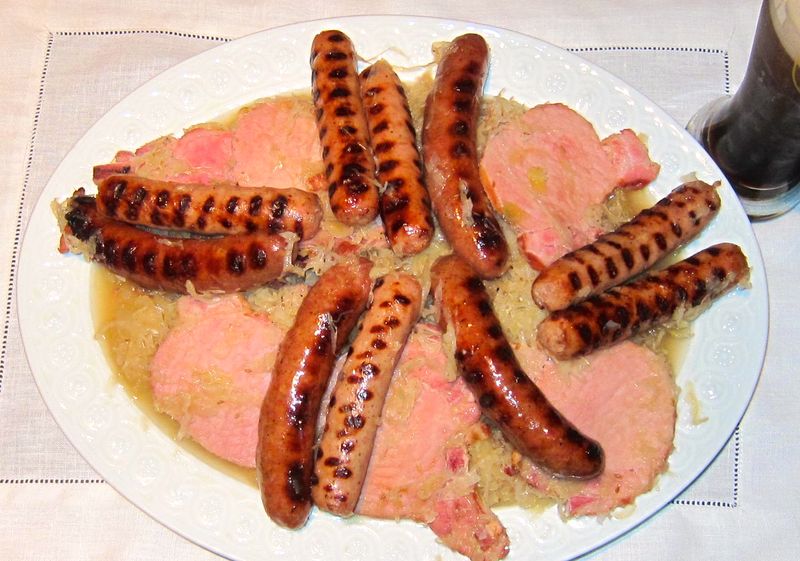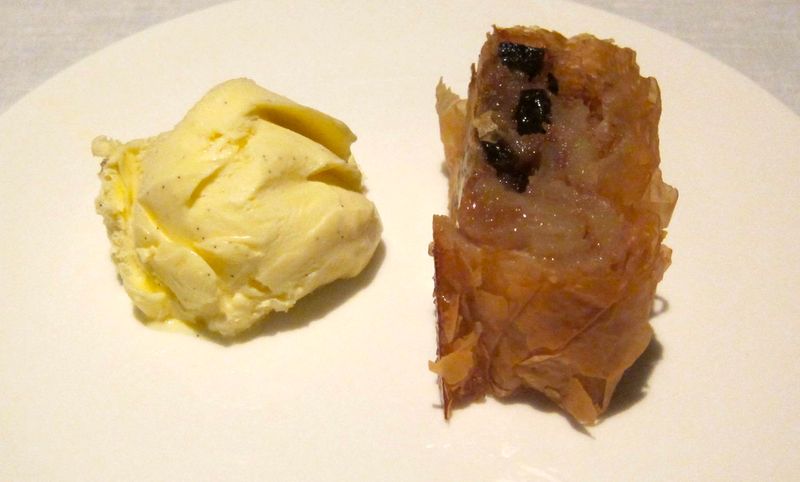Surrounded as it is by Belgium, the Neatherlands, Luxembourg, Liechtenstein, France, Switzerland, Austria, the Czech Republic, Poland and Denmark, it is not surprising that one finds a tremendous variability in the cuisine from region to region. Meat, most often pork, and potaoes form the basis for many classic German dishes. The gastronome eating his way through Germany would make sure to sample Sauerbraten (beef roast braised in wine or vinegar), German rye bread, Hassenpfeffer (rabbit stew), Himmel und Erde (apples and potatoes), Beefsteak Tartar (tartar steak), Kasseler Rippenspeer (roasted smoked pork loin), wursts (sausages), sauerkraut, dumplings and Schwarzwalder (Black Forest cake).
And lets not forget the beer; Germans love their beer. In fact, Germans consume 8,787,000,000 L of beer per year! That comes out to 107 L per capita per year. Only the Czech Republic has a higher per capita consumption (132 L ). Thirsty bunch, those Germans.
Our German menu:
Sauerkraut with Bratwursts and Smoked Pork Chops
Apple Strudel
Making sauerkraut is a lengthy process. For this reason, Josée used a store bought version - Hengstenberg Mildessa Mild German Sauerkraut. This is your basic sauerkraut prepared with wine and salt only. The Bratwursts were pork, one with and the other without beer. The pork chops were smoked. Some guests had beer but Josée and I drank Clos des Capucins, Domaine Weinbach, Pinot Blanc, Alsace, 2009.
Josée baked a fantastic Apfelstrudel (apple strudel) and served it with her home-made vanilla ice cream. The wine for this course was a slightly maderized Léon Beyer, Gewurztraminer Vendage Tardive, Alsace, 1990.
Four down, 26 to go.
Joseph Froncioni









































































































![Jeremy Scahill: Blackwater: The Rise of the World's Most Powerful Mercenary Army [Revised and Updated]](../../../6a00d8341c075e53ef0128756487fa970c-75hi.jpg)













Recent Comments